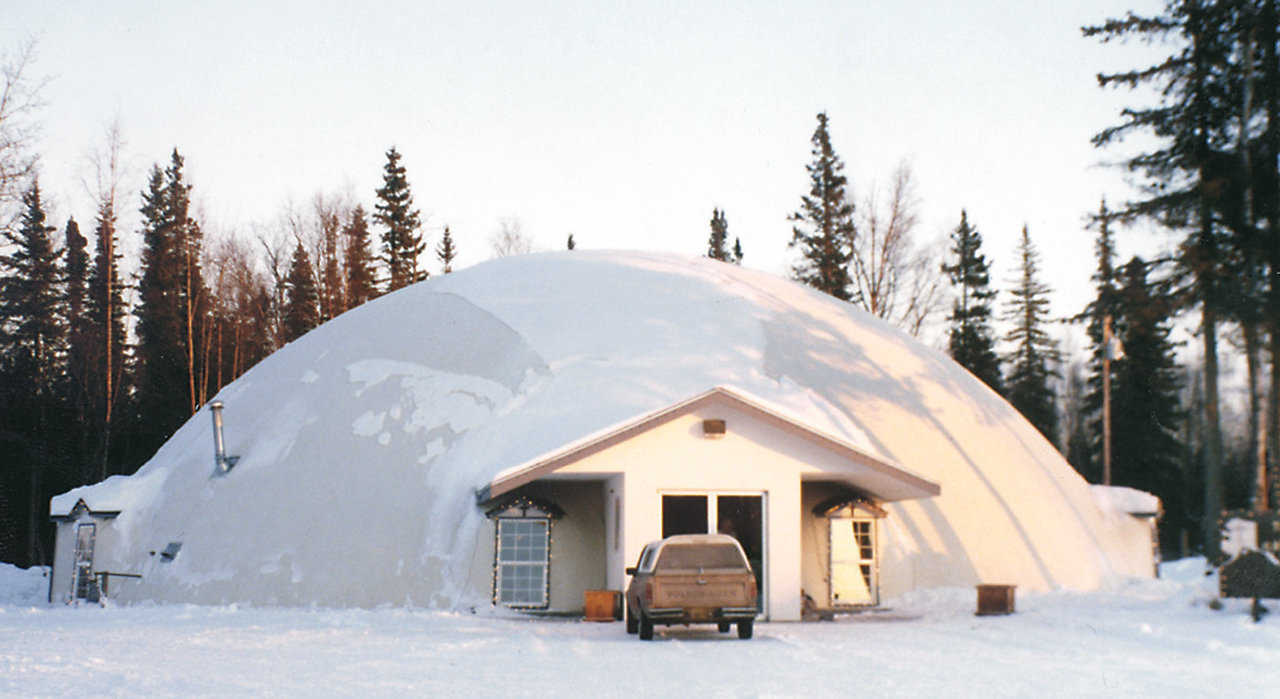Shaky reason!
According to Ray Ansel, pastor of Trinity Christian Center in Soldotna, Alaska, the number one advantage to building a Monolithic Dome in Alaska is a shaky one — earthquakes! “Alaska is in the highest earthquake zone,” Ansel said. “We have at least one, somewhere in Alaska — very often.” (Officially, Alaska averages 80 earthquakes a month.) “Monolithic Domes successfully survive those shakers.”
Trinity Christian Center
“I felt we were called to do something unique in Alaska,” Ansel said about his stewardship in Soldotna. “I knew we needed a large, multipurpose structure for our church, but the traditional just would not fly — would not flow. Designs were either impractical for Alaska or far too expensive to build there.”
They built a beautiful Monolithic Dome church, with a diameter of 80 feet and a height of 27 feet, that included a sanctuary and a community area.
In 1995, with its congregation of 100 standing in worship and singing, the church successfully endured a significant earthquake. “We felt the floor move,” Ansel recalled, “but no heaving or any serious structural damage.”
Other reasons for building Monolithic in Alaska
While Ansel may list earthquake survival as the numero uno advantage for constructing Monolithic Domes, rather than traditional, cornered structures in Alaska, he certainly does not see it as the only one.
“Monolithic Domes do not have shingled roofs — therefore no roof damage,” Ansel said. “In Alaska, there’s a problem with snow and ice damming roofs on traditional buildings. The snow melts, forming giant icicles on the eaves and blocking water flow. Water backs up under and displaces shingles. That’s one roof problem. Another is snow loads actually caving in a roof. These situations simply don’t exist with our Monolithic Dome.”
Ansel lists the energy-efficiency of Monolithic Domes as the third advantage. He cites Trinity Christian Center as an example: “Trinity has 8000 square feet. Our natural gas heating averages $72 per month. That’s all. Heating a traditional building of similar size would cost $1000 or more per month. We’re paying less than one-tenth of that!”
Finally, Ansel gives “an exterior requiring little or no maintenance” as the fourth advantage of a Monolithic Dome. “We have no problem with yellowing,” Ansel said. “The Airform stays fresh and clean.”
Are there any disadvantages? Ansel hesitated, then said, “I see only one and it’s really a design problem. Windows that are set too low get covered with snow, requiring constant shoveling. So, windows in a Monolithic Dome here in Alaska should be placed up higher.”
Don’t Be Scared – Be Prepared
Alaska’s state motto: Don’t be scared — Be Prepared. Louise and Chuck Snyder, both Native Alaskans, must have had that motto in mind when they decided on a Monolithic Dome home. Overlooking the Kasilof River, it consists of two domes, a house and a garage, each with a 36-foot diameter, for a total of 3000 square feet.
The dome home, built with a 9-foot stem wall, has two stories. Its primary heating system is an oil-fired furnace that heats the water for in-floor, radiant heat. But with thoughts of Y2K, the Snyders had a supplementary heating system consisting of a generator and wood stove placed between the domes that should heat them both.
No heat for two days!
Fortunately, the Snyders have not had to test this supplementary system, and, quite possibly, may never have to.
In January 1999, temperatures plummeted to minus 30 degrees, bringing with them a wind chill of minus 52 degrees Fahrenheit. One evening, Chuck noticed that the water was not as hot as it usually was. But Chuck simply thought they had temporarily overtaxed their hot water supply. The next day, however, they had no warm water. Chuck checked the furnace and discovered they were out of heating oil. At that point, their Monolithic Dome had been without heat for two days. But had it not been for the water going cold, the Snyders still would not have known it.
This article was first presented in our Spring/Summer 1999 Roundup. Dollar amounts quoted are 1990 prices.
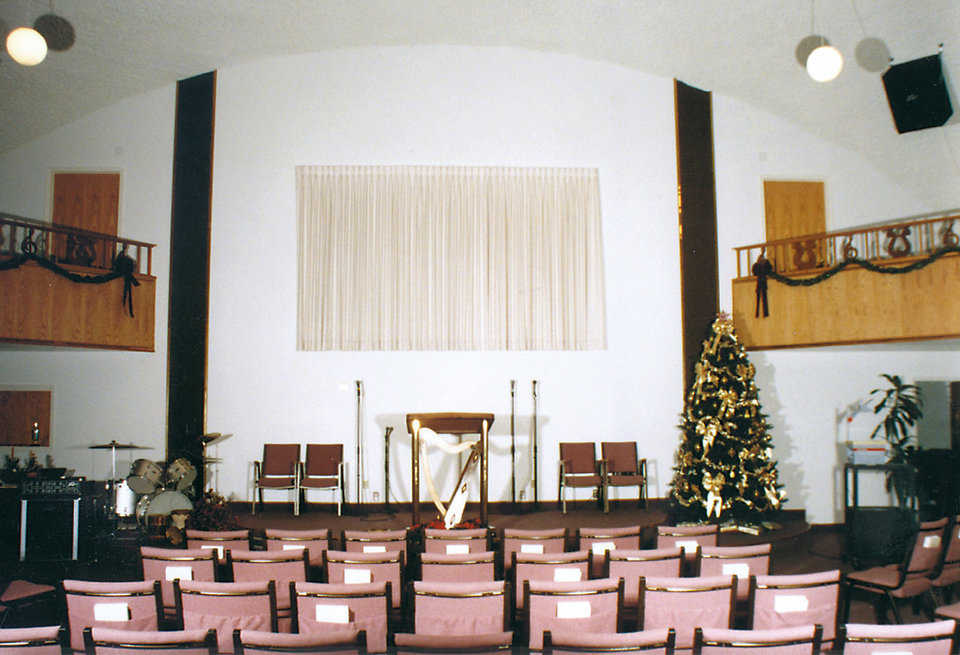
Trinity Christian Center’s Pulpit — The church was constructed by Ray Ansel who experimented with igloo-like structures before learning Monolithic’s technology.
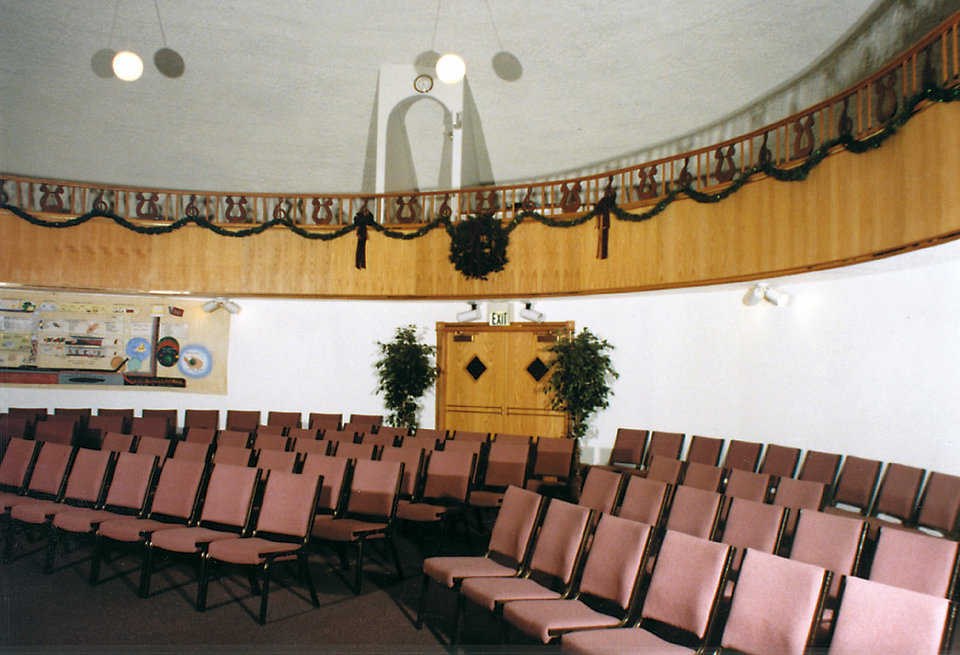
Congregation Seating and Balcony — It’s a warm, secure and peaceful prayer place.
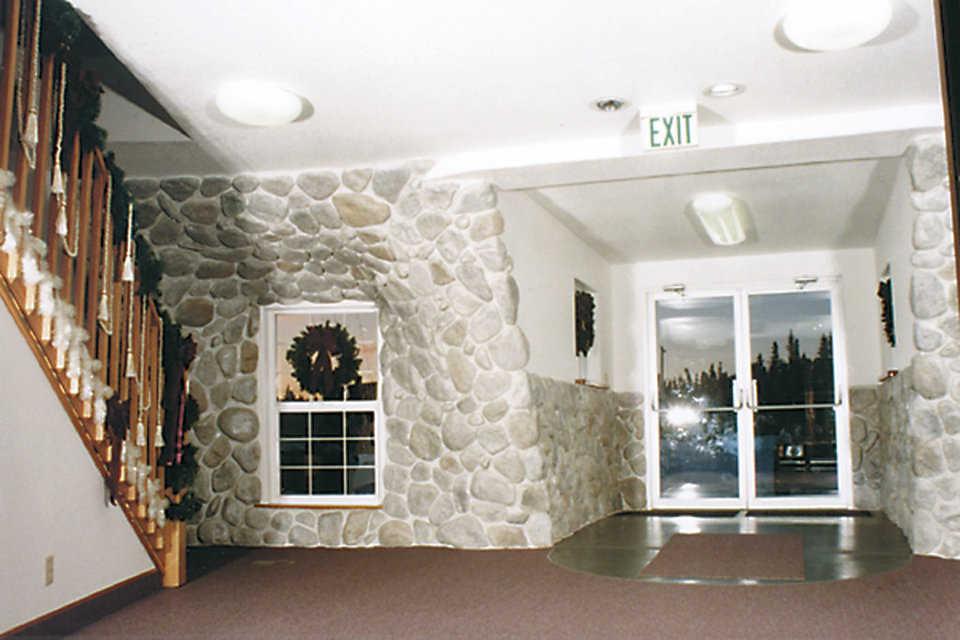
Interior Entryway — It has an attractive, inlaid rock wall.
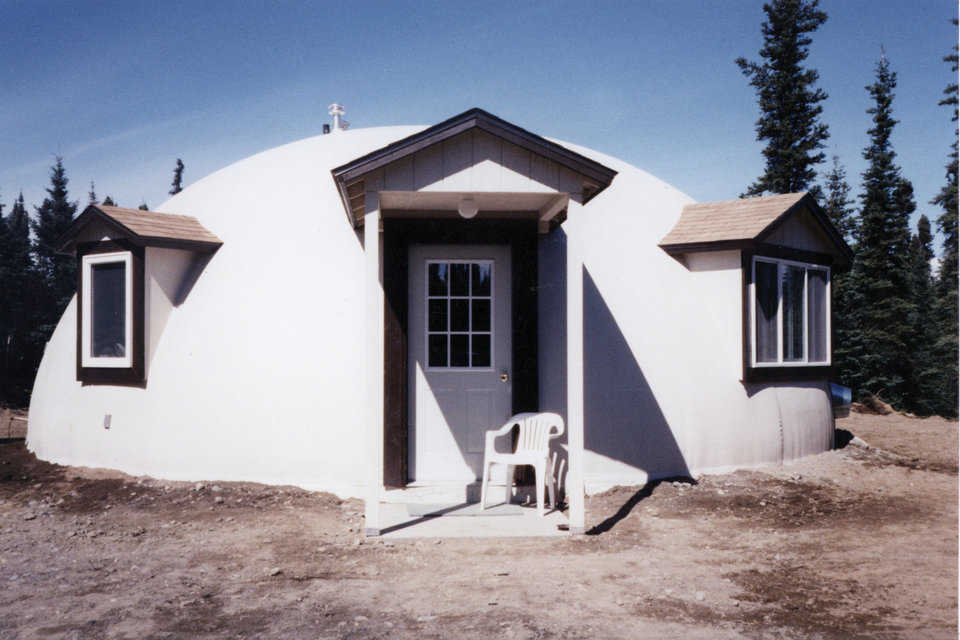
Popular Dome design for Alaskans — The Monolithic Dome Oberon offers space, efficiency and affordability and is a popular dome design for Alaskans. The Oberon has a diameter of 32 feet.
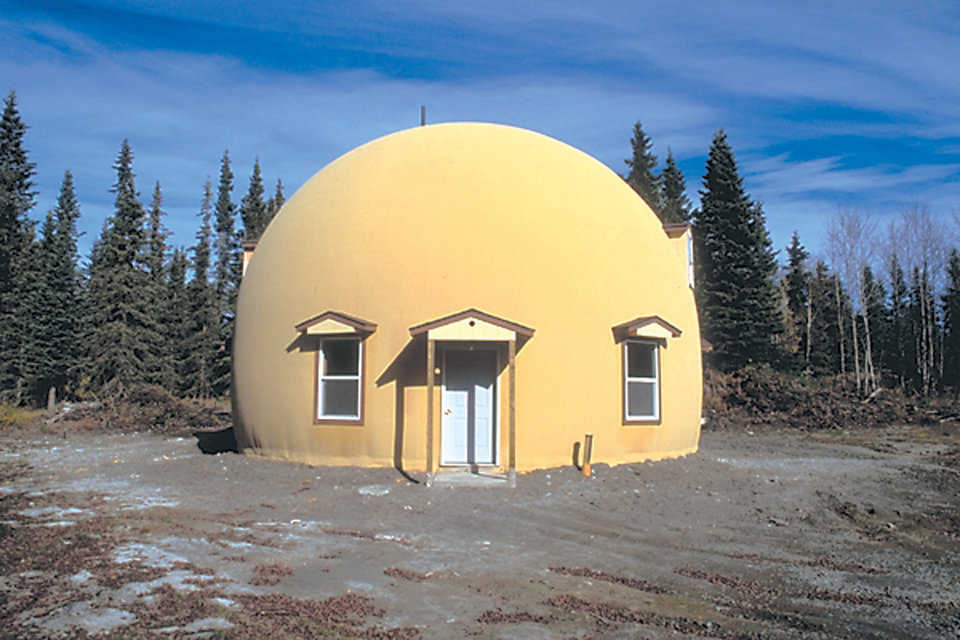
Charles Kneeland Home built by Ray Ansel — Located in Soldotna, Alaska this home is a two-level Monolithic Dome with a diameter of 36 feet on a 9-foot stemwall. Upper level has 2 large bedrooms with walk-in closets. Main floor features a kitchen, living areas and a bedroom. An air-to-air ventilation system keeps air flowing throughout the dome.
